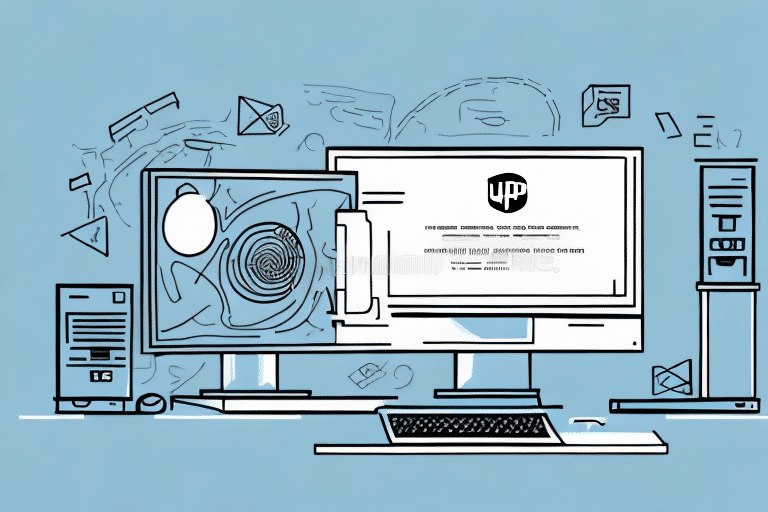Importance of UPS for Priority ERP
Enterprise Resource Planning (ERP) software is essential for organizations aiming to streamline their business processes, manage resources efficiently, and monitor progress. Priority ERP is a robust solution that oversees financial, production, and supply chain activities, ensuring operational excellence. To maintain optimal performance and ensure business continuity, a reliable Uninterruptible Power Supply (UPS) is indispensable. A UPS ensures that your Priority ERP system remains operational during power outages or surges, preventing disruptions that could impact your business operations.
Moreover, a UPS safeguards your hardware from power fluctuations that can cause significant damage. Power surges and spikes can lead to costly repairs or replacements of critical equipment. By investing in a UPS, you not only protect your infrastructure but also save money in the long run by minimizing downtime and maintaining uninterrupted business processes.
According to a report by Statista, the average cost of IT downtime is approximately $5,600 per minute, highlighting the financial impact of power interruptions. Implementing a UPS system is a proactive measure to mitigate these risks and ensure ongoing productivity.
Types of UPS Systems
When selecting a UPS system for Priority ERP, it's crucial to understand the different types available in the market:
- Online UPS: Offers the highest level of protection by continuously converting incoming AC power to DC and then back to AC, ensuring a consistent power supply without any interruption. Ideal for environments where power quality is critical.
- Line-Interactive UPS: Monitors and adjusts voltage levels to provide stable power output. It is suitable for situations with frequent voltage fluctuations but less demanding than online UPS systems.
- Standby UPS: Provides basic power backup by switching to battery power only when a power outage occurs. It's a cost-effective solution for small businesses with minimal power protection needs.
When choosing a UPS, consider its capacity (measured in VA or Watts) to ensure it can handle the electrical load of your Priority ERP system and connected devices. Additionally, evaluate the runtime, which indicates how long the UPS can supply power during an outage, to meet your business requirements.
For more detailed information on UPS types, refer to EPC's guide on UPS systems.
Selecting the Right UPS for Priority ERP
Understanding the power requirements of your Priority ERP setup is essential for selecting an appropriate UPS:
- Power Requirements: Assess the total power consumption of your servers, workstations, printers, and other connected devices. This helps in determining the UPS capacity needed to support your equipment.
- Runtime: Determine the duration the UPS needs to provide backup power during outages. This should align with your business operations and the time required to safely shut down systems if necessary.
- Physical Size and Weight: Ensure that the UPS fits in the designated space and can be handled safely, considering its weight and dimensions.
- Surge Protection: The UPS should offer reliable surge protection to guard against voltage spikes and fluctuations.
- Software Compatibility: Verify that the UPS's management software is compatible with Priority ERP to facilitate seamless monitoring and control.
Consulting with an IT professional or a certified UPS supplier can provide valuable insights into selecting the best UPS system tailored to your business needs.
Connecting and Configuring UPS with Priority ERP
Integrating your UPS system with Priority ERP involves several key steps to ensure seamless operation:
- Installation: Unpack and assemble the UPS system, then connect it to a dedicated power source.
- Device Connections: Link the output ports of the UPS to the input cables of your servers, workstations, printers, and other essential devices.
- Software Setup: Install the UPS management software provided by the manufacturer. This software allows you to monitor power status, configure settings, and manage shutdown procedures.
- Configuration: Integrate the UPS software with Priority ERP to enable automatic responses to power events, such as safe shutdowns during extended outages.
Ensuring that the UPS is connected to a dedicated power source separate from other devices enhances its effectiveness in protecting your Priority ERP system. Regular testing of the UPS system is also recommended to verify its functionality.
Optimizing and Maintaining Your UPS System
To maximize the performance and lifespan of your UPS system, follow these optimization and maintenance tips:
- Battery Management: Use high-quality batteries recommended by the UPS manufacturer and replace them periodically to maintain backup reliability.
- Regular Testing: Conduct routine tests to ensure the UPS and its batteries are functioning correctly. This helps in identifying issues before they lead to failures.
- Ventilation: Place the UPS in a well-ventilated area to prevent overheating, which can degrade battery life and performance.
- Cleanliness: Keep the UPS and its surroundings free from dust and debris to ensure efficient operation.
- Proper Sizing: Ensure the UPS is appropriately sized for your load requirements. An undersized UPS may fail to provide adequate backup, while an oversized UPS can be inefficient and costly.
Adhering to a preventive maintenance schedule and training IT staff on UPS management can further enhance system reliability. For comprehensive maintenance guidelines, refer to industry standards such as those outlined by the International Electrotechnical Commission (IEC).
Troubleshooting Common UPS Issues
Even with a reliable UPS system, issues can arise that may affect the performance of your Priority ERP software. Common problems include:
- Battery Failure: Leads to reduced backup time or complete failure during outages. Solution: Replace the batteries with manufacturer-recommended models.
- Poor Power Quality: Results in unstable power supply, potentially harming connected devices. Solution: Ensure proper voltage regulation and consider upgrading to a higher-quality UPS if necessary.
- Power Overload: Occurs when the connected load exceeds the UPS capacity. Solution: Reevaluate and reduce the number of connected devices or upgrade the UPS capacity.
- Software Incompatibility: Causes monitoring and management issues. Solution: Update the UPS software to the latest version and verify compatibility with Priority ERP.
For persistent issues, consult with the UPS manufacturer’s technical support or engage an IT professional to diagnose and resolve the problems effectively.
Comparison of UPS Brands for Priority ERP
Choosing the right UPS brand is crucial for ensuring reliability and performance. Some of the top UPS brands suitable for Priority ERP include:
- APC: Renowned for their reliable and high-performance UPS systems, APC offers a wide range of products suitable for various business sizes.
- CyberPower: Offers cost-effective UPS solutions with advanced features and robust build quality.
- Eaton: Known for their high-efficiency UPS systems that provide excellent power protection and management capabilities.
- Tripp-Lite: Provides a diverse selection of UPS systems catering to both small businesses and large enterprises, emphasizing durability and performance.
When comparing brands, consider factors such as price, features, warranty, and customer support to select the UPS system that best fits your organization's needs. Reviews and comparisons from trusted sources like Tom's Guide can provide additional insights.
Conclusion
A reliable UPS system is a critical component for any business utilizing Priority ERP software. It ensures that your ERP system remains operational during power disruptions, protecting your hardware and maintaining uninterrupted business processes. By understanding the different types of UPS systems, assessing your power requirements, and following best practices for installation and maintenance, you can select and manage a UPS system that enhances the performance and longevity of your Priority ERP infrastructure.
Investing in a quality UPS not only safeguards your technological investments but also contributes to the overall resilience and efficiency of your business operations.






















